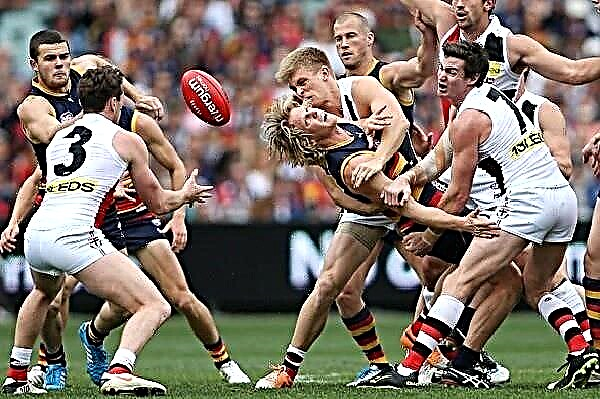The image of Jesus Christ is always recognizable. He is depicted on the icon of the Mother of God, on the Almighty Savior and on the icon of the crucifixion of the Lord Jesus Christ, where he dies for human sins. A great many images, however, originate from the earliest times.
They appeared even before the codification of the concept of Jesus. Also take a look at article 10 of controversial Christian relics.
10. The Good Shepherd. Mausoleum of Galla Placidia
The image of Jesus, which came from the Bible, shows a simple peasant who came down from heaven and is not an earthly king. The Lord appears to us in simple clothes, more often in robes. In the Mausoleum of Galla Placidia in Ravenna, there is a mosaic display of a slightly different Jesus.
The building, originally conceived for the tomb of the Roman Empress, was built around 430. Inside it is rich decoration. On the ceiling, blue and gold glittering tiles help create the effect of a thousand stars leading up to the cross. There is an icon above the front door “Good shepherd”. Only a few shepherds could be dressed as richly as Jesus in this icon.
He appears before us in purple and gold (such clothes were worn by emperors, not villagers), holding an imperial cross. Obviously, this is how they tried to show the connection between imperial and lordly power. You might be interested in the article 10 False Gods of Our Time.
9. Wooden doors of Santa Sabina
The Church of Santa Sabina in Rome was fully completed in 432. The building retains its appearance to this day, although it was devoid of its magnificent mosaics. You may think that a mosaic remains unchanged longer than a tree, but this wooden door has been bearing the image of the crucified Jesus Christ for many years.
Wooden panels carved from cedar are still preserved and can be seen in the church. The doors show various scenes from the Bible. One of the scenes - Jesus with long hair and a beard holding a cross. Although this depiction is standardized, Jesus is shown in Russia without a beard.
8. Jesus trampling on creatures. Chapel of the Archbishop in Ravenna
Since the 500s, the Archbishop's Chapel has shown us Christ standing on the necks of a lion and a snake. The psalm reads: “If you truly love God, then step on the lion and the snake, you will trample the dangerous lion and the cursed serpent.».
This mosaic depicts Jesus as a warrior in armor and a cloak. Why does the church need a protector? The church was erected during a period of rivalry between various Christian sects. Therefore, she needed protection not only from enemies, but also from disputes within the faith.
7. Healing a dying woman. Catacombs of Peter and Marceline
Rome was built under catacombs, tunnels and labyrinths, so many ancient frescoes have not survived to our time. An image of a dying woman was found in the catacombs.
The icon tells the story of a woman who has been bleeding for 12 years. She believed that simply by touching Jesus' cloak she would be healed. And this happened, but not because she touched the sacred garment, but because of her faith in God.
6. Recovery of the paralytic. Syria
One of the most popular stories is the story of the healing of a paralyzed person by the Lord. The sick man's friends were so desperate with grief that they broke the roof of the house where Jesus lived and brought the paralytic onto his bed. Seeing this, Christ said: “Get up, take your bed and go home».
After this, the healed man really got out of bed and left, taking the bed with him. This painting was found on a wall in a church around 230 BC in Syria, so the image is read not from left to right, but from right to left.
5. A woman with a baby. Priscilla's catacombs
When archaeologists excavated the Priscilla catacombs, they found a very valuable image of a woman with a baby. Many paintings show women. But the image of the Mother of God with a child, hidden in the corner of the catacombs, is perhaps the oldest in the world.
There was a lot of controversy over this find: is it true Jesus and Mary? If so, then the image was taken even before their codifications appeared.
4. Saint Callisto, Rome
Father Tertullian's Church describes how the people of Rome blamed Christians for all their problems. They thought Christians were to blame for epidemics and disease. Therefore, Christians were forced to hide from the Romans in places such as catacombs and churches.
On the walls of the church, people see frescoes depicting Jesus as a good shepherd carrying water and a lamb on his shoulder. This mural shows his concern for innocent Christians.
3. Mosaic in the Church of St. Mary
The mosaic came from Great Britain, belonged to a famous family from the Roman province. It is composed of Christian and pagan images while hunting. In the center is a man without a beard, surrounded by two grenades.
Since there are no symbols behind him, you might think that he is Jesus. Behind his head are written 2 Greek letters and ro (the first letter of the name of Christ in Greek and the general symbol of the Lord).
2. Crucifixion on an ivory plaque
The British Museum has the earliest depiction of the death of Jesus Christ. A plaque carved out of ivory shows his torment. Christ is nailed to the cross, the words “King of the Jews ".
On one side are Saints Mary and John, on the other, Longinus pierces Jesus with a spear. The body of dead Judas hangs on a tree, and under his feet is a bag of coins that he earned by betraying the Lord.
1. Graffiti of Alexamenos
This graffiti probably shows human nature, as well as the very first concept of Jesus. Found on plaster in 200 BC, the image tells of a man who gazes at a crucified man. If you look closely, you can see that the corpse actually has the head of a donkey, and underneath it is inscribed in Greek: “Alexamenos worships God».
Interesting fact - the crucifixion used to be applied to lower people according to the law. The donkey's head only enhanced the effect when viewed.
We recommend watching:
Scientists are examining the Turin Shroud relic - a canvas in which the body of Jesus Christ was wrapped after the crucifixion. Taking a picture of the shroud in 1898, the photographer Secondo Pia saw a human face in the picture. Perhaps with the help of the shroud, it will be possible to recreate the true appearance of Jesus Christ.



